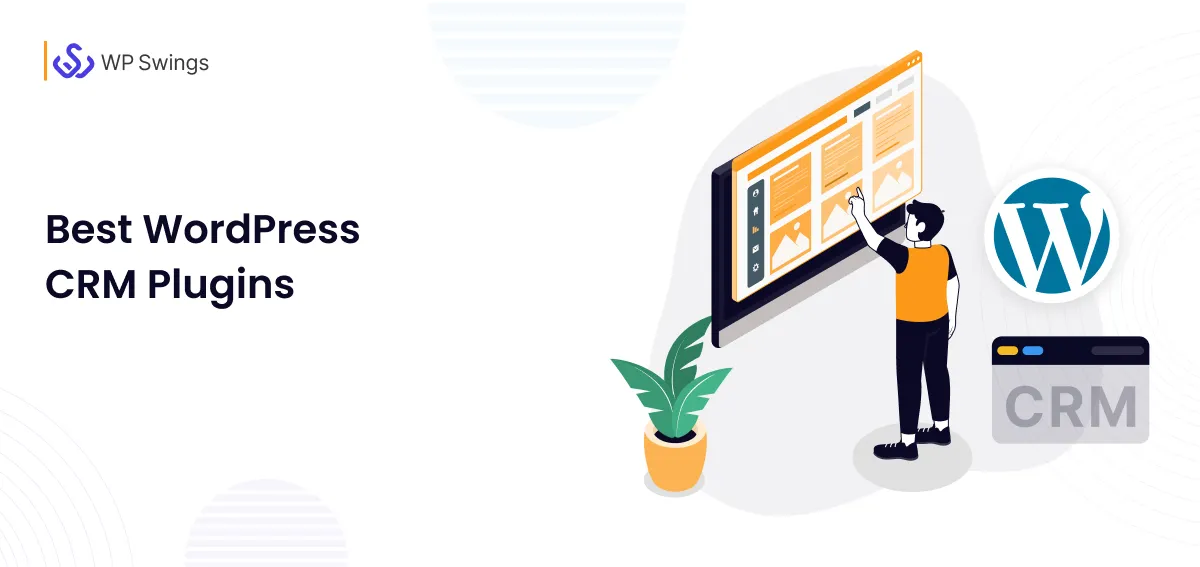
Refund and Exchange policy is the first thing that 68% of shoppers check before purchasing from an online store.
That is, out of every 10 buyers, 7 of them visit your Refund Policy Page, read it, and after being convinced they proceed with the purchase.
But,
What if your refund policy isn’t compelling, and is unfair to the buyers? Or, what if your policies are perfect but are not easy to understand?
How will your sales be affected?
Well!
In that case, you will lose those 7 out of 10 potential buyers. You have acquired those buyers with all your amazing eCommerce Branding Strategies and skills. Those buyers were just one step away from the purchase.
Losing such potential buyers at the last stage of the buying process is more degrading to the business than those customers lost at the initial stages.
In this article, I will guide you with some powerful tips to write a perfect refund policy that does not confuse buyers and reduces churn risk.
Blog’s Outline…
- What Is A Refund And Exchange Policy?
- How To Set Up Return Refund And Exchange System?
- Real-Life Examples Of Refund And Exchange Policy
- WooCommerce Refund & Exchange Plugins
- How To Write A Return Policy – Tips & Tricks
- Sample Refund / Return Template
- Where To Display Your Refund Policy???
- FAQs Regarding eCommerce Return and Refund Policies
- To Sum Up…
What Is A Refund And Exchange Policy?
As we know;
Refund and Exchange is a negative flow of your business cash.
This negative flow can be embraced if it gives satisfaction and happiness to shoppers. However, some buyers exploit refunds and exchanges through unfair tricks.
Yes, you heard that right…..
But before we jump into the nooks and crannies of it, let us understand the top reasons for returns
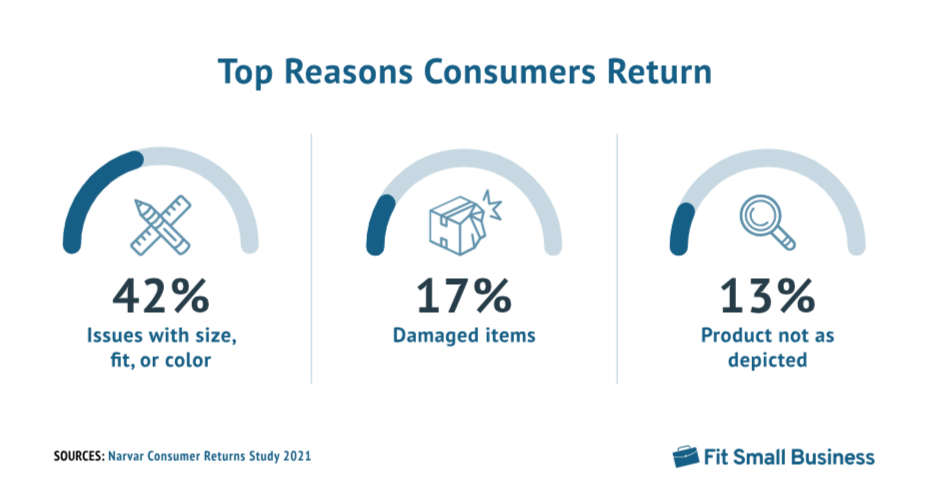
- According to Appriss and the National Retail Federation, return scamming is on the rise, costing US businesses more than $18 billion per year.
- Professional return fraud groups are now promoted on web forums everywhere on the web.
- To safeguard themselves from serial returners and consumer abuse, retailers should take specific countermeasures, such as improving product information and leveraging technological innovations.
Rules and regulations in your return and exchange process become a must-have for eCommerce stores to keep your refund and exchange under strict scrutiny and avoid every possibility of wardrobing. This set of rules is known as the return and refund policy.
Now, What’s A Good Refund & Exchange Policy?
A good refund and exchange policy filters out the fraudster cases and gives no space for wrong practices, and at the same time, does not cause any difficulty for valid refund and exchange requests.
Designing such rules and regulations is challenging and equally important for your business. And, this article has the sole purpose of helping you with tips and the process of writing down one such effective refund and exchange policy for your online store.
Note: If you are dealing with GDPR compliance issues, add this GDPR WordPress plugin to your website.
Now, that you are accustomed to the concept of a refund and exchange policy, we can understand how to set up one for your eCommerce store!
How To Set Up Return Refund And Exchange System?
If you have recently started your online store business, or are planning to start an online store soon, then setting up return and exchange is equally necessary as setting up the checkout flow or other fundamental processes.
On average, 80% of people in the U.S. and the UK check the Returns & Refund Policy on a retailer’s website before making a purchase.
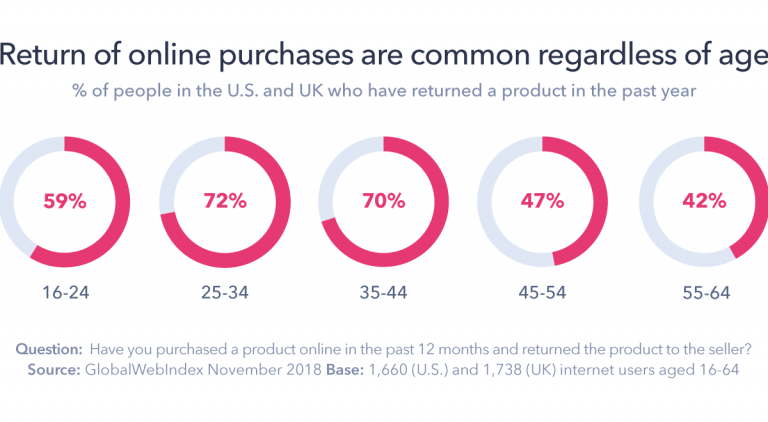
Source- GWI (Global Web Index)
If you are facing any discrepancies with your existing refund and exchange solution for your store, continue reading. Because it seems you have won the treasure!!!

Why?
Well, it is designed in a way that an eCommerce owner can manage all the return refunds and exchanges in a systemized manner. The interface is very simple, and user-friendly both for the administrator and the customer! It is an all-in-one solution for Return, Refund, Order Cancellation, Exchange, and Wallet systems, with an exceptionally efficient communication system between the Admin and the Buyers.
Are you interested?
WooCommerce RMA For Return, Refund & Exchange!
I am sure that the above resources are more than enough to easily get you started with a return refund and exchange for your WooCommerce store. And, if there are still any issues while setting up the plugin, the support team is ready to help you 24/7 for the premium users.
eCommerce Return Statistics and Information
Customers are increasingly choosing to shop online as the online industry expands. There will be more returns, exchanges, and refunds as a result of this.
- The average return rate for eCommerce is typically 20% to 30% – Shopify
- Did you know at least 30% of all products ordered online are returned, as compared to 8.89% in brick-and-mortar stores?– Invespcro.
- On average, holiday return rates huddle around 17.9% each year – Shopify.
- One of the decisive reasons encouraging people to shop online is the easy return policy (33%). Other factors that can be mentioned are free delivery and discounts – Simicart.
- 62% of consumers are more likely to shop online if they can return an item to a store – Richpanel.
- 76% of first-time customers who enjoy an easy return experience say they would shop with that retailer again – Simicart
- Did you know that for every $100 in returned merchandise, retailers lose $10.30 to return fraud? Fraudulent return requests cause the biggest losses for 13% of all retailers, which is why return fraud has become more of a priority for retailers – Shopify.
- Millennials are more likely to return items than other generations.
Having a perfect return refund and exchange for your online store is very necessary for customer satisfaction. A satisfied customer has a higher lifetime purchase and thus benefits the growth of the business in the longer run, which is why we have our RMA plugin for the users out there!
Activation and Installation of the plugin are easy and quick. Still, if you face any issues, you can follow the step-by-step guide using the full dedicated article on it.
Complete Setup For Free & Premium Return Refund and Exchange
Thus, by providing the return, refund, and exchange facility to your buyers, you may lose a sale but you win a customer that will have a much longer and higher purchase possibility than a few returning sales.
Before moving to some great policy writing tips, let’s check a real example of truly good eCommerce return policies.
Real-Life Examples Of Refund And Exchange Policy
The majority of online stores have a return policy as their benefits are undeniable.
When writing your refund policy, taking examples from other stores for guidance is a very good practice. And, so we bring you an inspiring example. If you feel limited by one example, check out the footer of some of your favorite online stores.
Man Crates
This is an awesome example of a refund policy that I appreciate and after reading you would too.
Man Crates is an online store that sells men’s gifts. Its refund policy is so convincing and easy that anyone can fall in love with this store.
Here’s the return policy.
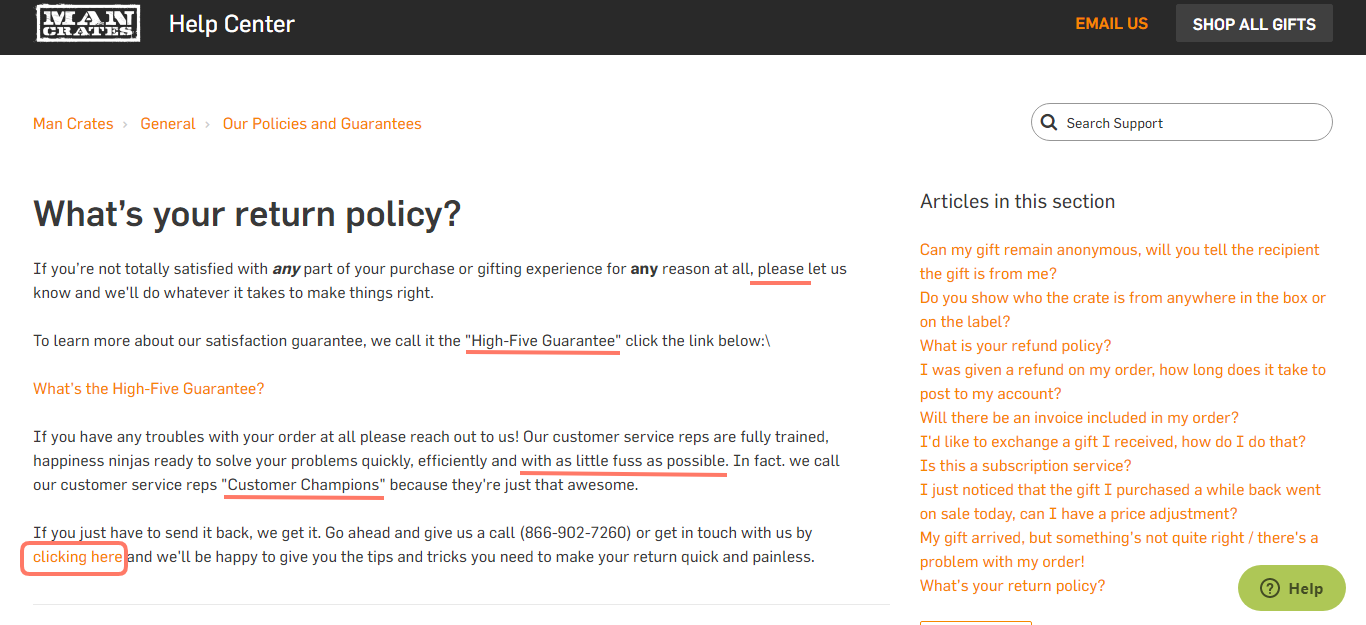
They are kind and helpful with their words. Their refund policy is supportive and short, and they handle their refund and exchange directly through emails or calls. “Customer Champions” is what they call their support team.
They also guarantee return satisfaction with their concept of the “High-Five Guarantee“. Here’s what it means.

I could sense the level of confidence and satisfaction a reader of this refund policy will get. And, so, this is not just a refund policy page but a perfect sales promotion and customer retention page.
WooCommerce Refund & Exchange Plugins
Utilizing the proper services for processing returns and exchanges will help you save time and money on the fulfillment and operations side, just as having a formal return and exchange policy tool will help reduce some of the hours spent on customer care.
1. Free Return Policy Generator – Shopify
Shopify provides businesses with the policy generator as a free tool. In other words, using it is free. Shopify provides several additional free policy generators— Terms & Restrictions, Privacy Statement, and Refund Statement.

2. Return & Refund Policy Generator – Terms Feed
Generate a Return & Refund Policy for your eCommerce store using the Return & Refund Policy Generator from TermsFeed. A Return & Refund Policy is useful for informing customers about your returns and refund requirements.
Free hosting page. Download the Return and Refund Policy as HTML, DOCX, Plain Text, and Markdown. Edit as you wish. Update anytime.
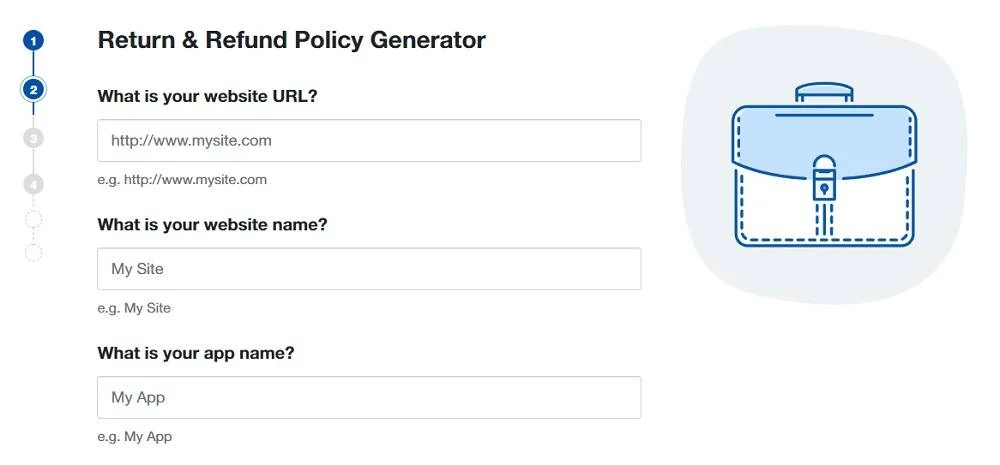
3. Free Refund & Return Policy Generator – Termly
With the help of this free tool from Termly, you can create a refund and return policy template for your online store, SaaS, or eCommerce website.
No matter what size, kind, or location of the business you run, this return policy template generator customizes each policy, particularly to your platform.
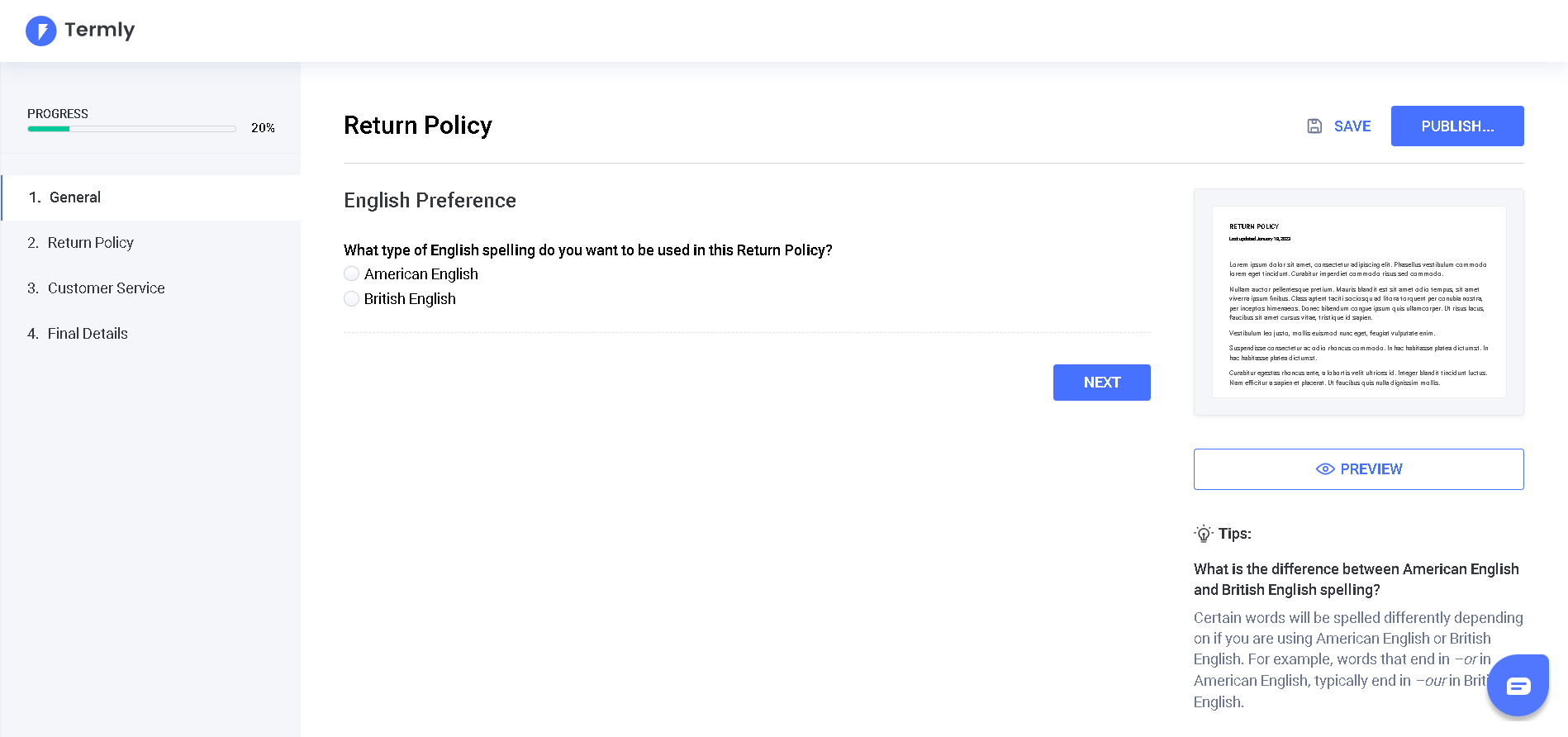
4. RMA Return Refund & Exchange for WooCommerce – WP Swings
This plugin is a return and exchange solution that easily integrates with your existing eCommerce system, and is used by numerous eCommerce stores.
It offers the merchant or the store owner the option to set up the number of protocols based on the rules followed by if/else cases under the setting to be carried over as the refund policies as well as a complete reverse logistic mechanism for your store.
For more clarity in the process refer to the tab screencast attached below-
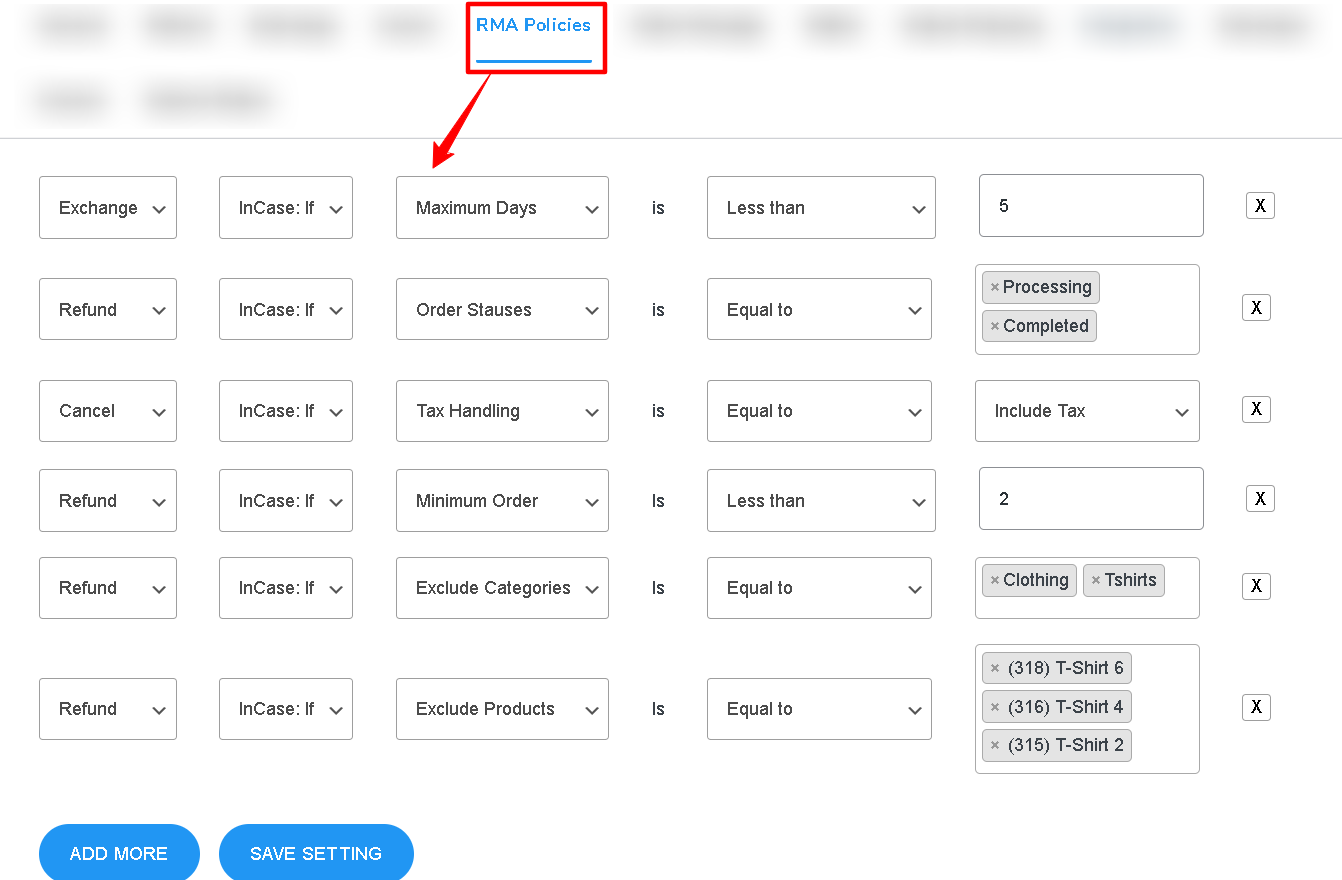
This would also use the WooCommerce product tags to allow businesses to set up customized rules for returning and exchanging certain products as well as create and customize their refund, and return policies on their own. You’ll be surprised to know that we also have a free version of this plugin – WooCommerce RMA Plugin!
5. Free Return & Refund Policy Generator ~ Privacy Policies
Generate a Return & Refund Policy to be transparent with your customers and win their trust when they purchase from you.
A clear and easy-to-read Return & Refund Policy for your eCommerce store has been shown to increase store sales.
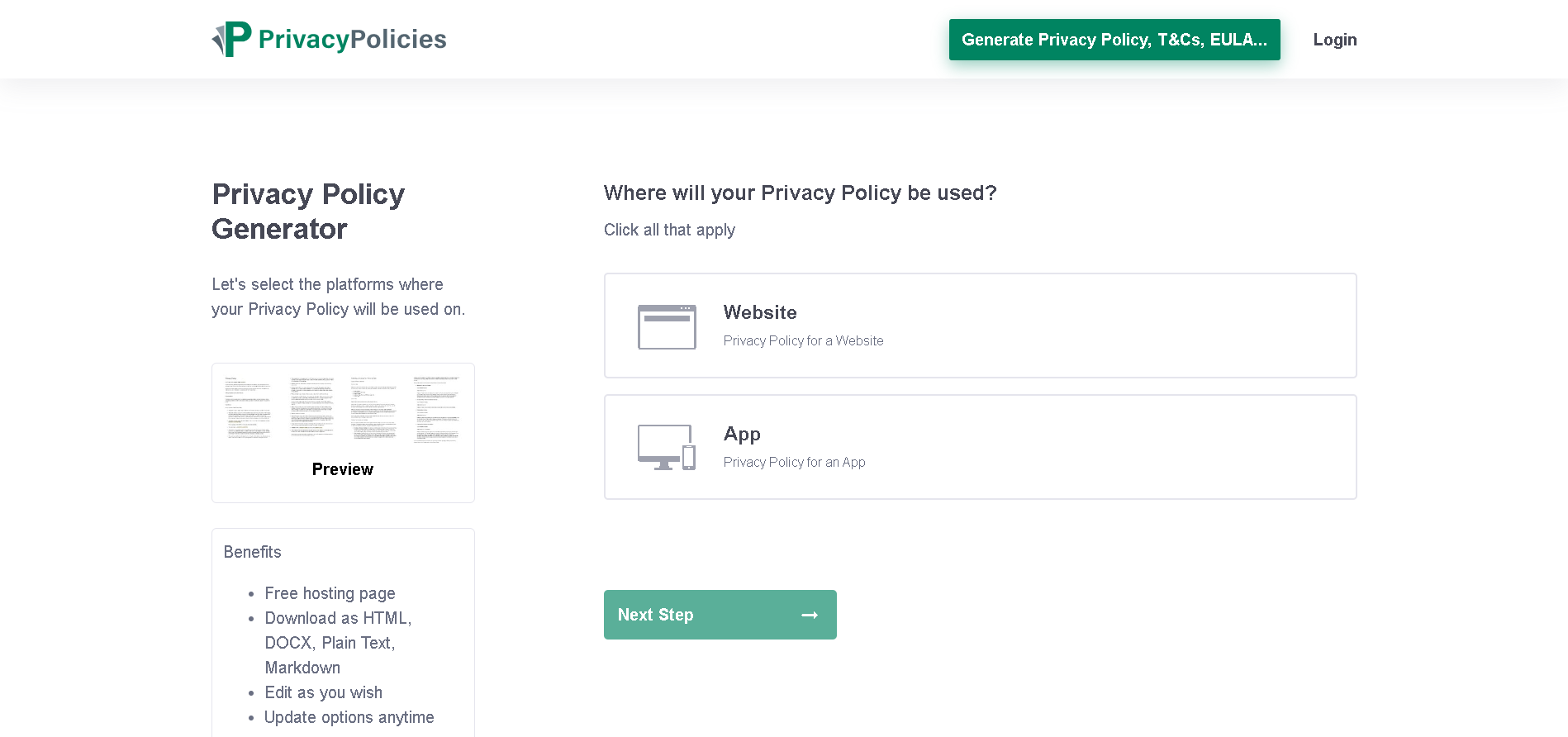
How To Write A Return Policy – Tips & Tricks
Writing a refund and exchange policy for your online store requires good research, as that directly affects your revenue. The tone, the flow of sentences, and the choices of words and phrases; all matter.
These tips which I am going to reveal now will help you to write down a perfect refund and exchange policy for your online store.
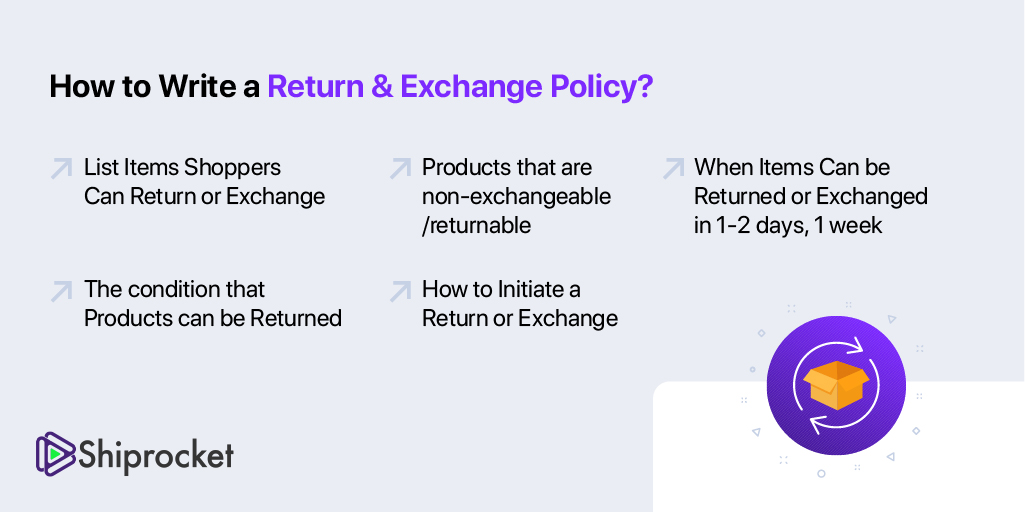
Let’s get started:
Buyers returning the products to the store is not a good trait for your business. It’s in fact against your business. An excessive amount of refund and exchange requests can harm your business.
However, it’s hardly possible to eliminate refund and exchange requests from an online store. Particularly the festive season sales, when the refund and exchange rate climbs to a peak of about 30% of purchased products. And, if you dare to remove the RMA facility, you will ultimately lose your customers.
So, the best practice is to take your returning customers as an opportunity rather than as a burden. You could upsell or cross-sell, or give them a pleasant experience that brings them back for their next shopping. Stay on your customer’s side, and try and give them the most convincing refund and exchange.
Pro Tip: Take Refund And Exchange As An Opportunity To Win Customers!
Stay on your customer’s side, and try to give them the most convincing refund and exchange.
At the same time, your refund and exchange policy is the easiest and the most appropriate way to restrict improper return and exchange requests and protect your business from wardrobing cases.
1. Make It Easy and Simple To Understand
Buyers need immediate solutions for their refund-related problems.
A simple and easy-to-understand written return policy can give quick solutions and hence they naturally develop a positive preference for your brand.
To make it simple, you can include tables, as shown below.
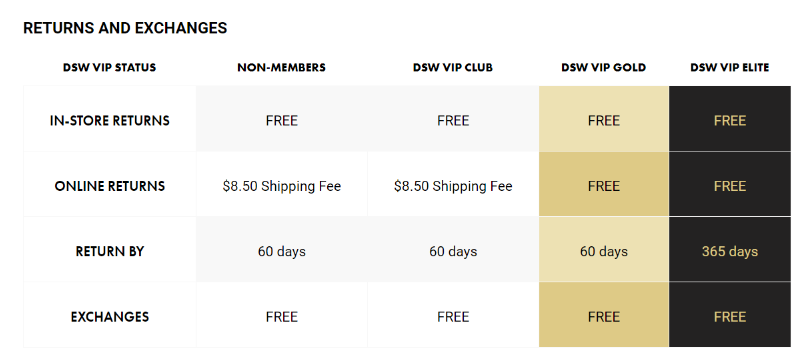
Furthermore, including Frequently Asked Questions (FAQ), makes it quick for buyers to jump straight to those questions whose answers they are looking for.
2. Be Original. Avoid Copy Paste
Some beginners make mistakes copying refund and exchange policy pages (or even other similar pages like privacy pages) and making required changes. This can be risky.
The best is to write down a purely dedicated refund and exchange policy for your brand, that has traces of your brand identity and tone.
3. Using Refund Policy Templates
Writing Policies, Rules, Regulations, etc., isn’t fun.
Is there any way you can do it quickly and nicely?
Yes! Templates.
Using templates, specific to your niche, product, and store type can help quickly get the work done. Terms feed return and refund policy template generator can help you with that. All you have to do is to fill in the details about your business and it will generate an eCommerce refund and exchange policy for you.
Sample Refund / Return Template
(Utilize It if You Find Relevant to Your Business Type)
Return / Refund Policy [Text Format]
Last updated [Date]
We appreciate your purchase. We hope you enjoy your purchase. However, you may return your item to us for [a full refund], [store credit], or [exchange] if you are not entirely pleased with it for any reason. For further details about our refund and exchange policy, please check the section below. For further details about our return policy, please check the section below.
RETURNS
Within [#] days of the purchase date, all returns must be postmarked. All returned goods must be brand-new, unopened, and complete with all original tags and labels.
RETURN PROCESS
For a Return Merchandise Authorization (RMA) number to return an item, contact customer care through email at [Email Address]. Send your return to the following location after getting an RMA number, placing the item securely in its original packaging, and [with your proof of purchase/the provided return form/other].
[Company Name]
Attn: Returns
[RMA #]
[Street Address]
[City, State ZIP Code]
[Country]
[We’ll cover the cost of return shipping or reimburse you. Please be aware that any return shipping costs are your responsibility. We strongly advise you to mail your return through a trackable method.The prepaid shipping label that was included with your delivery may also be used. We’ll cover the cost of return shipping or compensate you for it. Please be aware that any return shipping costs are your responsibility. We strongly advise you to mail your return through a trackable method. The prepaid shipping label that was included with your delivery may also be used. The cost of delivery will be deducted from your refund if you utilize the prepaid shipping label.]
REFUNDS
We will process your [return] or [exchange] after receiving your return and evaluating the condition of your item. Please give us [#] days to handle your [return] or [exchange] once we get your goods. Depending on your credit card company, refunds could take 1-2 payment cycles to reflect on your statement. When your return has been processed, we’ll send you an email to let you know.
EXCEPTIONS
The following items cannot be [returned] or [exchanged]:
[1ST Item]
[2ND Item]
[3RD Item]
To arrange a refund or exchange for any defective or damaged products, please get in touch with us using the information below.
Please Note
All returns costing more than $[Dollar Amount] will incur a $[Dollar Amount] restocking fee.
Products on sale are FINAL SALE and cannot be exchanged.
[Other]
QUESTIONS
If you have any questions concerning our eCommerce refund and exchange policy, please contact us at:
[Phone Number]
[Email Address]
Although it is an easy solution, it has no personal touch to it. So, make it worth adding your ideology to it. Because you know about your brand more than anyone else.
4. Draw a Clear Border Between Refundable and Non-Refundable Products, and Services
Your refund policy page must enlist the product or type of products that are refundable from the non-refundable products. This clear distinction should be based on fair and logical thoughts.
Across the globe, have consumers who make purchases online bought replacements for the goods they’ve returned?
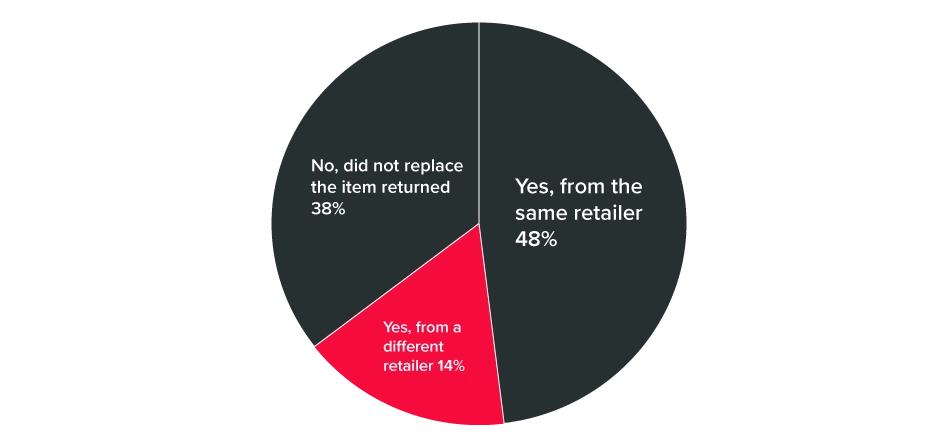
Source– Insider Intelligence
Products that are costly and fragile must be refundable, while other products such as eatables, personalized products, gift cards, etc can be listed out of refundable categories.
5. Mention the Time Limit Clearly
This is a critical point. This is the first thing shoppers check in the refund and exchange policy And, so you must mention this as early as possible.
Here’s an example.

6. Who Will Pay The Cost Of Return
Your refund and exchange policy must mention the cost handling of the product refund. The best practice is to provide free return shipping.
But, if you have planned to charge anything from your customer for the return shipping, then the refund and exchange policy is the best place to mention it.
7. Focus On Your Strong Points
Don’t make an all-around weak refund policy. Always have at least one strong point that you can use to hook your shoppers. For example; SmartBuyGlasses offers 100 days of eCommerce return policy, which is really a good attraction for shoppers.

And they have prioritized this feature right at the beginning of writing a return policy to hook their shoppers immediately.
But, as you read their guidelines further, you will realize that these 100 days of liberty are not as useful as they might seem. The customer will have to pay all the charges incurred in the returns delivery, and several other restrictions.

Further, the product must be unused, with original packaging, tags, and manufacturer seal. And, the products are checked on return and if found used, the refund will not be made.
With so many restrictions, 100 days of refund and exchange policy can’t be much celebrated.
8. Don’t Blame Your Buyers For Making Mistakes
Never blame your buyers for making wrong purchases which leads to refund requests. Be neutral about it. Because there is no fixed reason for a return request for unconvinced products.
Sometimes it’s buyers, sometimes it’s retailers, and other times it’s just a product that does not suit the buyers. So, focus more on solving the solutions of your unhappy customers instead of blaming anyone for it.
Essential Tip- Make Sure Your Return & Refund Policy Is Easily Accessible
Before making a purchase, more than two-thirds of potential shoppers will review your refund and exchange policy. Customers might just as well ignore a policy if they can’t discover it or comprehend it. Once you’ve created a transparent return policy, ensure the guidelines are easily accessible.
This entails posting the policy in as many locations as feasible. Your terms should be readily available from every page of the website (including checkout), as well as on invoices and other customer records, receipts, and even packaging.
Let’s dive deep into this and let you understand well the crucial areas where you can display your refund and exchange policy….
Where To Display Your Refund Policy?
After writing down one such amazing refund policy for your online store, you definitely will not want it to hide from your customer’s reach.
The obvious question is how to make it more discoverable to your buyers.
And for that, the refund policy needs to be exposed at the most relevant places on the website where your buyers are most expected to look for.
Here’s a list of the most appropriate places where you must display your refund exchange policy.
1. Footer Of Your Website
Add your refund policy page in the footer menu of your website along with other customers’ services. Since the footer menu is visible on all pages of your website, hence it’s a universal option for customers looking for a refund policy page.
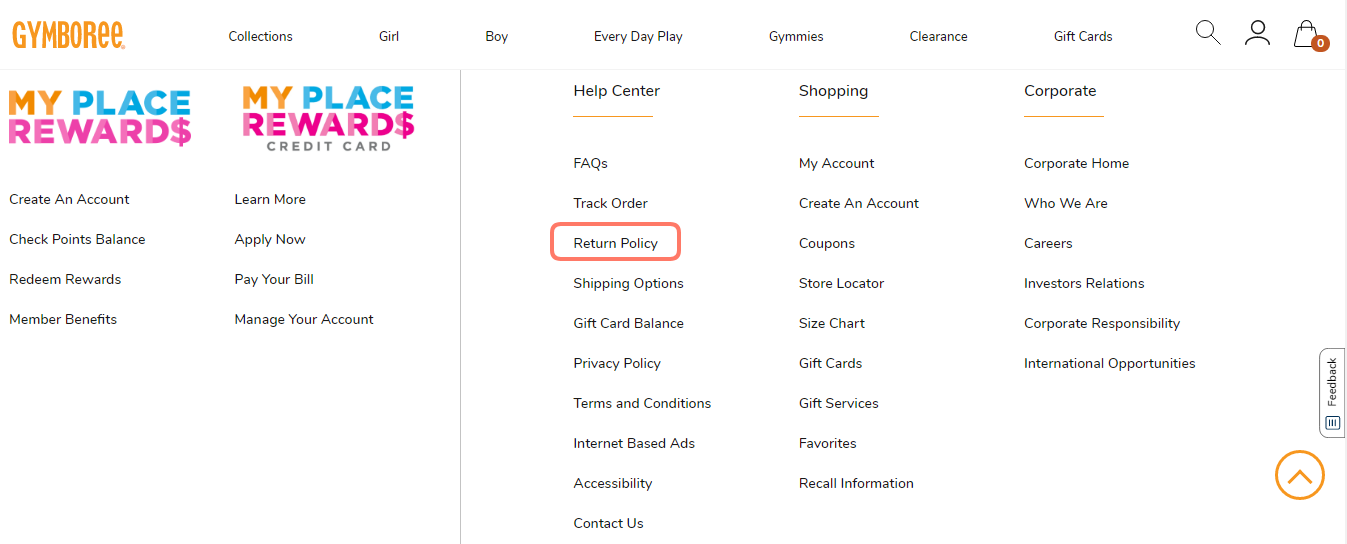
2. The Product And Cart Page
Buyers on the product page are closer to the purchase decision. And, if they knew that the product is refundable, it would encourage them to go for purchase.
Thus, the link to the refund policy page on product pages helps to improve customers’ purchase decisions.
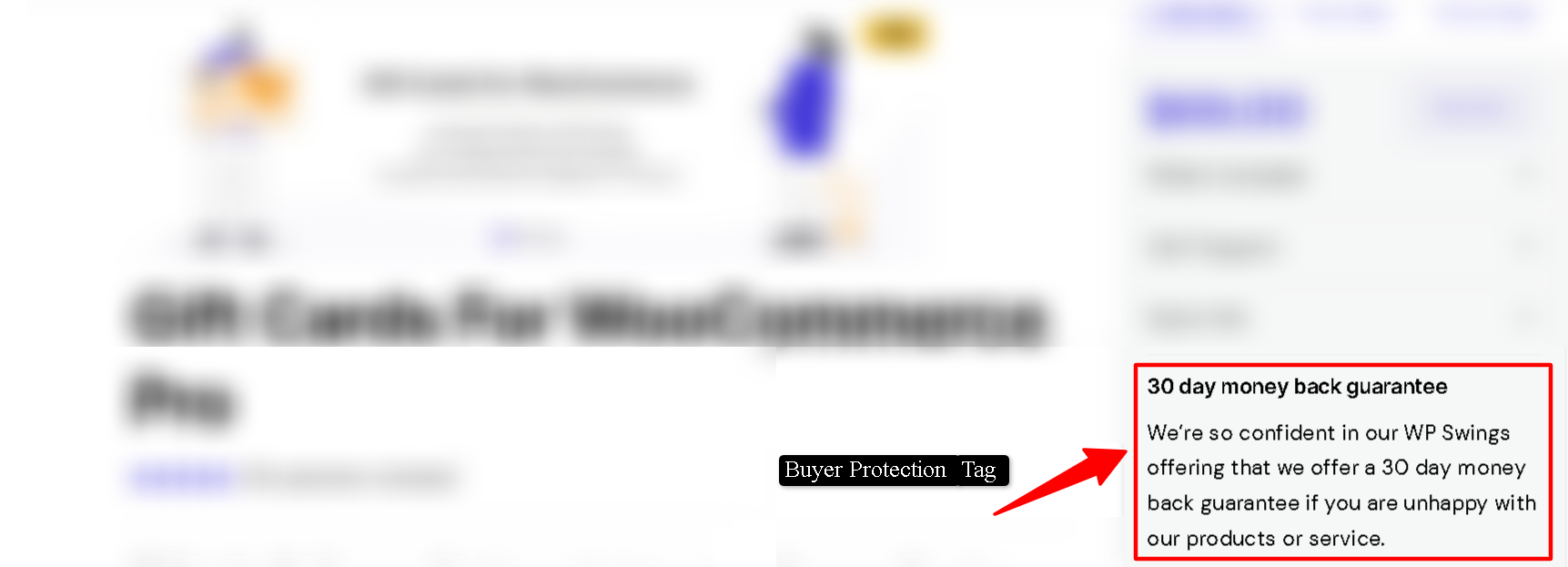
3. FAQ Page
Frequently Asked Questions (FAQ) is the common section that shoppers or visitors look for when they face any issue. Including the refund policy page link to your FAQ can be a good way to help your shoppers easily find your refund policy and solve their related queries.
4. Checkout Page
That’s really good hard work that has brought a shopper to the high-converting checkout page. And, losing such customers just because he failed to find out your refund and exchange policy is worse.
So, display your refund and exchange policy on the checkout page of refundable products. Encourage their purchasing action by telling them that they have a return and exchange facility.
FAQs Regarding eCommerce Return And Refund Policies
As was already mentioned, having a good Return & Refund Policy in place can benefit you—
- lessen the general expense of returns and replacements
- Boost client retention
- might perhaps boost sales
The following list of frequently asked questions may be helpful to you—
Q1. Does My Return Policy Need To Be In Place?
Even though there isn’t a regulation mandating online retailers to have a return policy, you might need one if you want to uphold the terms and conditions for returns and refunds.
For instance, a shop must accept returns and issue refunds for all goods returned within 30 days after purchase in the state of New York if the retailer does not present a Return & Refund Policy. You must draft and post a return policy with your unique conditions if you want to restrict this in any manner.
This is crucial when shopping online because buying something without first seeing it in person increases the likelihood of problems.
You can be at the mercy of state regulations governing return and refund policies if you don’t have a return policy. Additionally, you risk alienating prospective clients who worry that they won’t be able to return a product if they need to or want to.
Q2. What Advantages Do Return Policies Generally Have?
The existence of a return policy has two primary advantages—
- First, you will have discretion over the terms of your returns. Some laws demand that you give a minimum duration within which you will accept all returns if you don’t establish a return policy.
- Second, you’ll acquire the trust of prospective clients and increase your sales. Customers are much more inclined to transact business with businesses that offer and advertise a return policy.
Q3. Which Details Are Required In My Refund Policy?
Include the following details in your return policy–
- How long do customers have to request a return?
- The best way to start a return.
- Return policy conditions (must be unworn, in original packaging, etc.)
- Limitations on returnable goods (no returns on software or undergarments, etc.)
- In what format do you issue refunds? (the original form of payment, store credit only, etc.)
- Who pays the return shipping fees?
- If you deduct any restocking fees or other costs from returns.
Q4. Can The Admin Add Some Fees For The Refund & Exchange Process?
Ans: Yes, the admin can put some extra fees in the refund & exchange of a product by moving in WPSwings -> RMA Setting -> RMA Policies Tab >> & then set the Refund/Exchange including tax policies accordingly.
Q5. Should I Seek Permission For My Return Policy To Implement It?
To implement your return policy, you do not need to obtain consent.
If you want to go above and beyond to make sure all of your bases are covered, include a checkbox that is not checked that customers must check to indicate that they “Agree to your Return Policy” on your eCommerce store’s final checkout screen.
Since your Refund Policy is a part of the Terms and Conditions, you automatically receive assent to it by including it in the agreement and asking clients to agree to be bound by your terms.
To Sum Up…
Having a perfect and well-written return policy for your online store is a gem for your business.
It helps to not just manage the return and exchange but also build a strong customer relationship, improve customer experience, and the overall impact of the growth of your online store.
The above tips will help you to write one such refund policy. At last, caring for your customers is caring for your business.
One Place For All Offers And Premium & Free Plugins…
I would like to know your opinion on the importance of a refund and exchange policy for an online store. The comment section is waiting for you.



